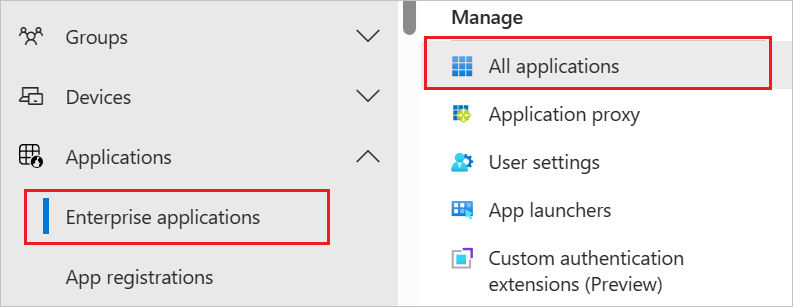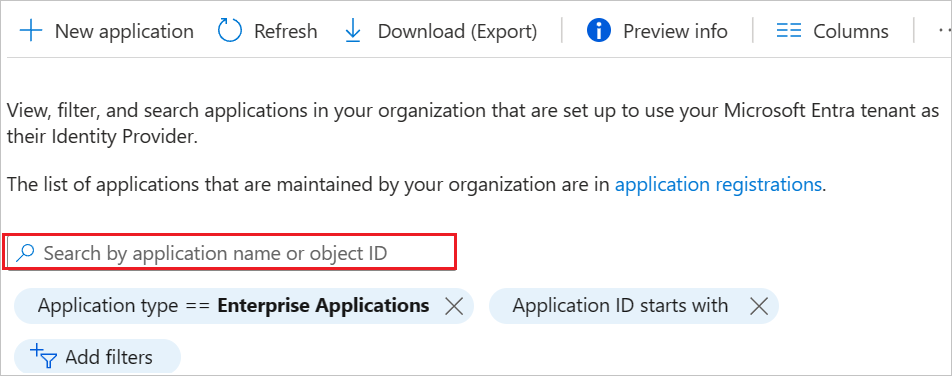Configure M-Files for automatic user provisioning
This tutorial describes the steps you need to perform in both M-Files and Microsoft Entra ID to configure automatic user provisioning. When configured, Microsoft Entra ID automatically provisions and deprovisions users and groups to M-Files using the Microsoft Entra provisioning service. For important details on what this service does, how it works, and frequently asked questions, see Automate user provisioning and deprovisioning to SaaS applications with Microsoft Entra ID.
Supported capabilities
- Create users in M-Files.
- Remove users in M-Files when they do not require access anymore.
- Keep user attributes synchronized between Microsoft Entra ID and M-Files.
- Provision groups and group memberships in M-Files.
- Single sign-on to M-Files (recommended).
Prerequisites
The scenario outlined in this tutorial assumes that you already have the following prerequisites:
- A Microsoft Entra tenant
- One of the following roles: Application Administrator, Cloud Application Administrator, or Application Owner.
- M-Files Cloud Subscription (Classic Cloud is not supported).
- A user account in M-Files with the Subscription admin or Access admin access to M-Files Manage.
Step 1: Plan your provisioning deployment
- Learn about how the provisioning service works.
- Determine who will be in scope for provisioning.
- Determine what data to map between Microsoft Entra ID and M-Files.
- The necessary mappings are predefined but you can map two additional data fields to M-Files.
Step 2: Configure M-Files to support provisioning with Microsoft Entra ID
Before you set up user provisioning in M-Files, make sure that all vaults in your subscription have user synchronization disabled in M-Files Admin.
If you have previously configured user provisioning in M-Files Manage with your own Entra ID application, you cannot change the configuration to use the M-Files application from the Microsoft Entra application gallery. If you want to use the M-Files application instead, delete the existing configuration from M-Files Manage and disable or delete the related Entra ID application. Then, follow these instructions to create the new configuration.
- Log in to M-Files Manage at https://manage.m-files.com.
- In the left-side page navigation, click Provisioning.
- Go to the Configuration tab.
- In Create configuration for user provisioning, click Azure AD gallery app.
- Enter the necessary information.
- In Configuration name, enter a unique name for the configuration.
- Select Default license type for the provisioned users. All the provisioned users first get this license. You can change a user group's license type to a higher one after user groups have been provisioned. If there are not enough available licenses of the default license type in the subscription, all the users do not get the license.
- Click the copy icon (
 ) for each piece of data, that M-Files Manage created, and note down the values.
) for each piece of data, that M-Files Manage created, and note down the values.
Note
The client secret is not shown anywhere else when you close the dialog.
Step 3: Add M-Files from the Microsoft Entra application gallery
Add M-Files from the Microsoft Entra application gallery to start managing provisioning to M-Files. If you have previously set up M-Files for SSO you can use the same application. However, it's recommended that you create a separate app when testing out the integration initially. Learn more about adding an application from the gallery here.
Step 4: Define who will be in scope for provisioning
The Microsoft Entra provisioning service allows you to scope who will be provisioned based on assignment to the application and or based on attributes of the user / group. If you choose to scope who will be provisioned to your app based on assignment, you can use the following steps to assign users and groups to the application. If you choose to scope who will be provisioned based solely on attributes of the user or group, you can use a scoping filter as described here.
Start small. Test with a small set of users and groups before rolling out to everyone. When the scope for provisioning is set to assigned users and groups, you can control this by assigning one or two users or groups to the app. When the scope is set to all users and groups, you can specify an attribute based scoping filter.
If you need more roles, you can update the application manifest to add new roles.
Step 5: Configure automatic user provisioning to M-Files
This section guides you through the steps to configure the Microsoft Entra provisioning service to create, update, and disable users and/or groups in TestApp based on user and/or group assignments in Microsoft Entra ID.
To configure automatic user provisioning for M-Files in Microsoft Entra ID:
Sign in to the Microsoft Entra admin center as at least a Cloud Application Administrator.
Browse to Identity > Applications > Enterprise applications.

In the applications list, select M-Files.

Select the Provisioning tab.

Set the Provisioning Mode to Automatic.

Under the Admin Credentials section, enter your M-Files Tenant URL, Token Endpoint, Client Identifier and Client Secret. Click Test Connection to ensure Microsoft Entra ID can connect to M-Files. If the connection fails, make sure that the values you entered are correct and try again.

In the Notification Email field, enter the email address of a person or group who should receive the provisioning error notifications and select the Send an email notification when a failure occurs check box.

Select Save.
Optional: If you want to synchronize additional user information, you can define two additional fields to be synchronized to M-Files Manage. The information is shown in Additional information 1 and Additional information 2 on the User information page.
- Under the Mappings section, select Synchronize Microsoft Entra users to M-Files.
- In the Attribute-Mapping section, click Add new mapping.
- Use these values:
- Mapping type: Direct
- Source attribute: Enter the Entra ID attribute
- Target attribute: Select urn:ietf:params:scim:schemas:extension:info:2.0:User:info1 or urn:ietf:params:scim:schemas:extension:info:2.0:User:info2
- Match objects using this attribute: No
- Apply this mapping: Always
- Click Ok.
- Optional: To synchronize two additional data fields to M-Files Manage, add a second mapping with the other available target attribute.
Note
It is not recommended to make changes to the default attribute mappings.
To configure scoping filters, refer to the following instructions provided in the Scoping filter tutorial.
To enable the Microsoft Entra provisioning service for M-Files, change the Provisioning Status to On in the Settings section.

Define the users and/or groups that you would like to provision to M-Files by choosing the desired values in Scope in the Settings section.

When you're ready to provision, click Save.

This operation starts the initial synchronization cycle of all users and groups defined in Scope in the Settings section. The initial cycle takes longer to perform than subsequent cycles, which occur approximately every 40 minutes as long as the Microsoft Entra provisioning service is running.
Step 6: Monitor your deployment
Once you've configured provisioning, use the following resources to monitor your deployment:
- Use the provisioning logs to determine which users have been provisioned successfully or unsuccessfully.
- Check the progress bar to see the status of the provisioning cycle and how close it's to completion.
- If the provisioning configuration seems to be in an unhealthy state, the application goes into quarantine. Learn more about quarantine states here.
More resources
- Managing user account provisioning for Enterprise Apps.
- What is application access and single sign-on with Microsoft Entra ID?.
Related content
- When the user provisioning is complete, create links between the provisioned user groups and M-Files user groups in M-Files Manage. For instructions, refer to M-Files Manage - User guide.
- Learn how to review logs and get reports on provisioning activity.